Knowing which plants can survive the winter in your area will lead to a thriving, more beautiful landscape.
Walk around just about any garden center or nursery, and you'll notice that the plants there usually have tags with helpful details such as botanical name, sunlight needs, and hardiness zones. Or if you're shopping online, you'll often see zone numbers listed along with the descriptions for each plant. Make sure to zero in on this information because it can help you figure out if a particular perennial, tree, and shrub can survive the winter and grow back the next year in your area. But wait, do you know which hardiness zone you are in? It's a key piece of the puzzle when you're figuring out what to grow in your yard. Here's what you need to know.
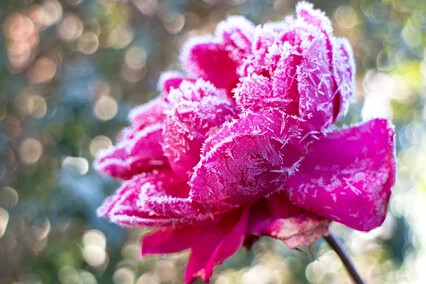
Where Do Hardiness Zones Come From?
The concept of hardiness zones has a nearly 100-year history. Researchers at Arnold Arboretum of Harvard University came up with the first at least four more times over the next few decades to include 10 color-coded zones based on more current temperature data at the time.
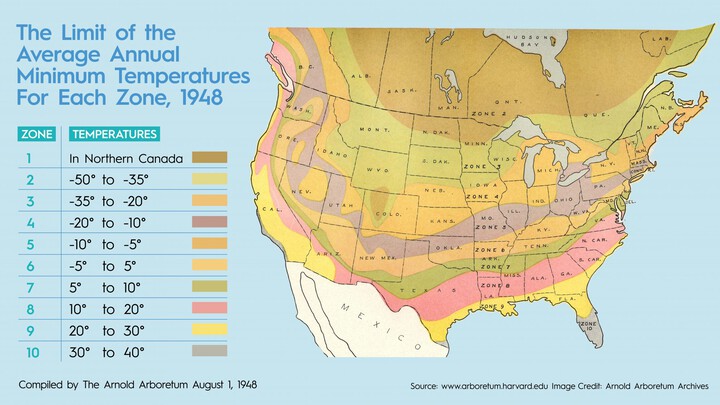
The Arnold Arboretum map defined zones by the lowest average temperature experienced in its coldest month of the year. If an area had an average February temperature of 20 degrees (that map used Celsius rather than Fahrenheit) it would be in one zone. If temperatures only dropped to 25 degrees, that area would be placed in a different zone. One problem with the first few versions of the Arnold map was that the zones weren’t uniform; some were separated by 5 degrees, some by 10, some by 15.

Then, along came the US Department of Agriculture (USDA) with its own hardiness zone map in 1960. It used the same weather data to divide up the country into zones as the Arnold map but made one big change: Uniform 10-degree zones. In 1990, the USDA updated its map and introduced an “A” and “B” system that divided each zone into two five-degree sub-zones.
In 2012, it revised its Plant Hardiness Zone Map again to its most current version. It includes zones numbered 0 through 13, with each zone receiving an “A” and “B.” To find out the zone you're in, you can either locate where you live on the map and match the color coding in the key to the zones, or the USDA website has a handy tool where you can enter your zip code and it will tell you.
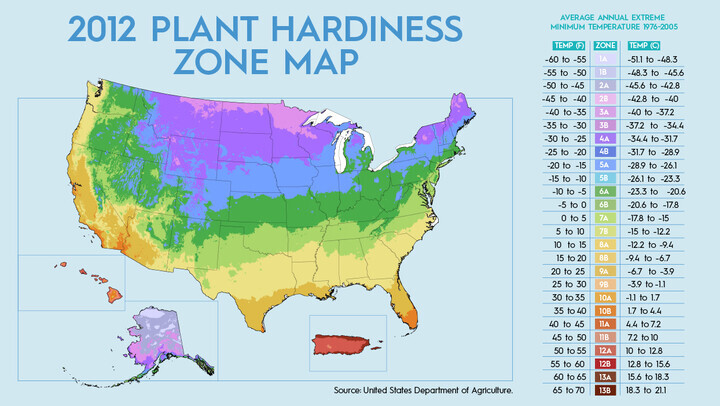
What Hardiness Zones Mean for Gardening
Let's say you're in Columbus, Ohio, so that puts you in Zone 6a. Houston, Texas? That's in Zone 9a. Southern Minnesota? Brr, you’re a 4b. But what does that really tell you when it comes to which plants you can grow?
Many perennial plants, shrubs, and trees are often sold with their hardiness zone compatibility listed right on their tags alongside other specifications such as light requirements and size you can expect it to reach. People assign these zones based on the lowest temperatures specific plants are known to survive.
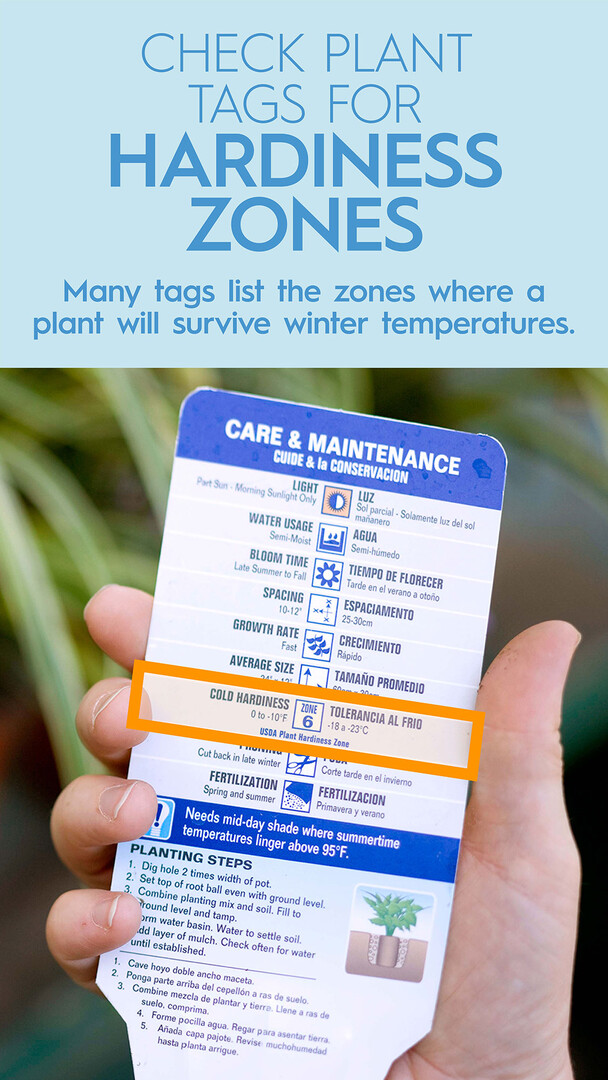
Keep in mind, however, that hardiness zones are only helpful when you need to know about a plant's cold tolerance. They don't really matter when it comes to annuals, which complete their lives in a single year, or to tropicals like many houseplants that won't go completely dormant over the winter and return the following spring.
Other Factors to Consider
For cold-hardy perennials and other plants, their ability to thrive in your garden depends on much more than just their hardiness. Knowing your hardiness zone is "a starting place, not the be-all end-all," says Dave Whitinger, executive director of the National Gardening Association, a nonprofit community and research organization specifically for home gardeners. "It's just one variable out of many,” he adds.
You also need to consider several other environmental factors. Is your soil acidic or alkaline? How much precipitation do you get? What elevation are you at? When does your ground first thaw and when is your first frost? Do you get a lot of snow? The hardiness zone map doesn’t help you with any of these questions, and they’re all just as important as how cold your winters are.
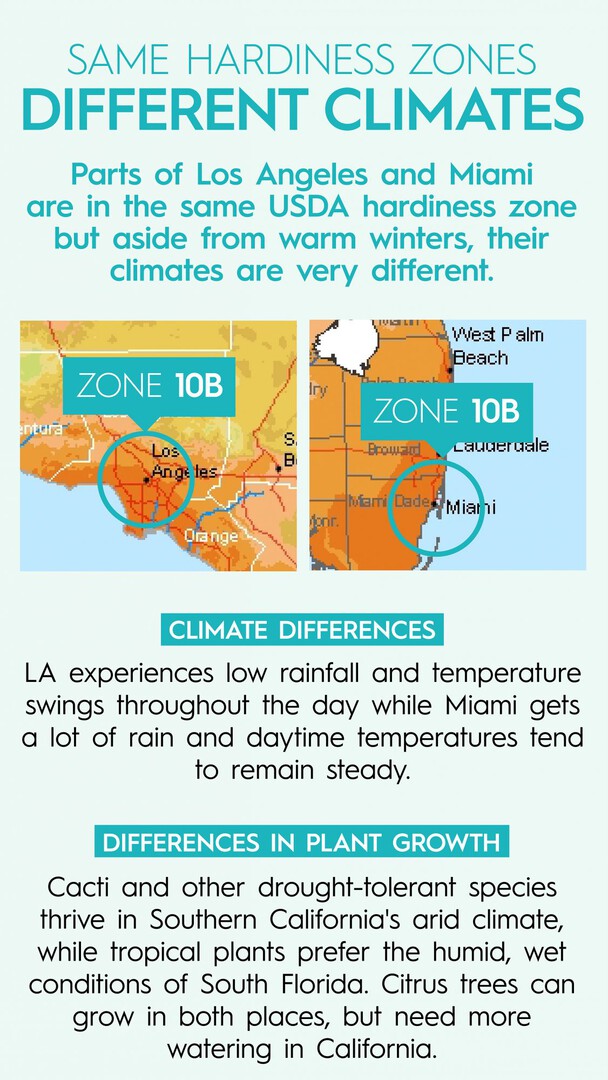
For example, parts of Los Angeles and parts of Miami are in the same hardiness zone: 10b. But aside from the fact that their winters aren’t very cold, those two climates don't have much in common. Los Angeles is dry, mountainous, and can experience huge dips in temperature throughout the day, while Miami is wet, right at sea level, and tends to have fairly steady daily temperatures. Orange trees, for example, thrive in both of those places (providing they’re watered in Los Angeles). But cacti, which can’t handle much precipitation, generally thrive in the arid climate of Southern California, but won't survive the subtropical rain of South Florida.
Snow is also a major factor. Areas that experience a lot of snow, like New York, are in a colder hardiness zone but are actually able to grow things that people in warmer zones cannot. One example is the fig tree, which New Yorkers have grown for generations by blanketing them and allowing them to be covered in snow, insulating them for the winter. Snow acts as an insulator, keeping the temperature of the ground under the snow warmer than the air. A climate zone or two south might have warmer winters overall, but without that insulating snow plants may actually experience lower temperatures.
How to Choose What to Plant
While there isn’t a universal map that’ll show you exactly what you can grow, given the specificity of your particular backyard, there are plenty of resources to lend a helping hand. Whitinger recommends checking with your local extension service. Extension services are affiliated with land grant universities across the country, and they help do local research on a number of subjects, including plants. They’ll have scientifically accurate guides, articles, and information designed for where you live. Many have websites packed with locally relevant information on them; you can also call them and ask for advice. A good place to start is asking which varieties of native plants or fruits and veggies do well in your area.
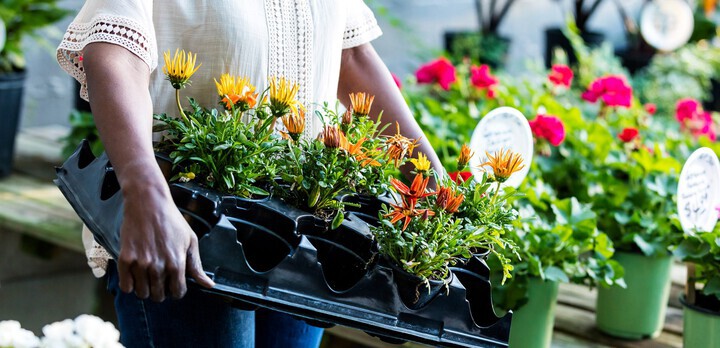
Another place to go for help is your local independent garden center or nursery. These businesses are incredible resources because they specialize in growing plants adapted to your particular region. They’ll know what type of tomato works best in your summers and what kinds of pests come out. They can recommend exactly when the best time is to plant out your flowers in spring so they don't get zapped by a late frost.
While these resources will help guide what you do in your yard, remember that the more you garden, the more knowledge of your own you'll gain from the experience. So, start with your hardiness zone and grow from there.